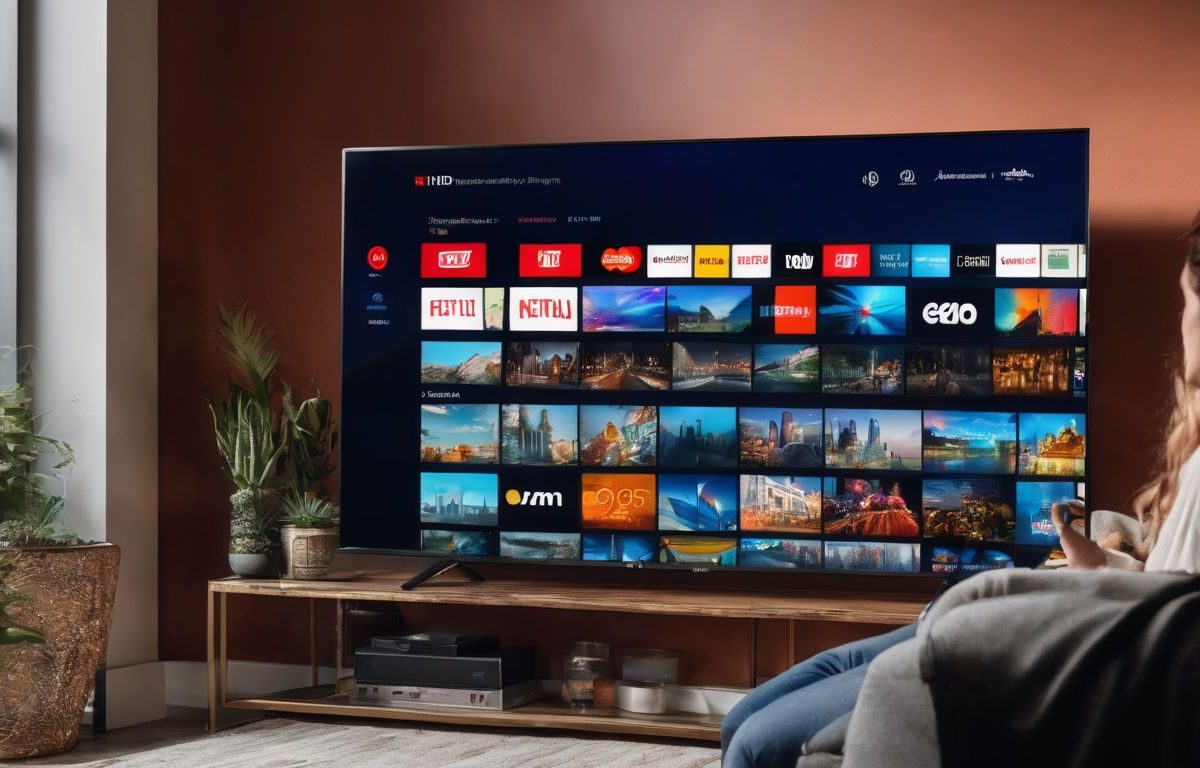The European streaming video market is undergoing rapid transformation in 2024. This is driven by shifting consumer preferences, technological innovations, regulatory frameworks, and intense competition among platforms. To stay ahead, both global and local platforms are making strategic changes, and several key trends are emerging. In this article, we’ll explore these developments with insights from industry sources and statistics that highlight where the market is headed.
1. The Growth of Localized Content
Localized content production has become a mainstay of the streaming strategy for many global platforms operating in Europe. According to Mediaplay News, the American streaming giants have an 85% market share stranglehold on European video consumption. Netflix, Amazon Prime Video, and Disney+ have ramped up investments in local-language productions to cater to specific European audiences.
European consumers have shown a growing preference for shows and films that reflect their local cultures, histories, and values. For example, Netflix’s Spanish series Money Heist (La Casa de Papel) became a global phenomenon, setting the stage for similar localized successes.
Two NPAW clients which offer localized video content are Viaplay in Norway, and Go3 in the Baltics. These providers are also pushing forward with their content offerings tailored specifically for national audiences, ensuring that competition remains strong.
Ausra Sidaraviciene, CTO at Go3 discusses “Next-generation TV” in the Baltics
2. Rising Popularity of Sports Streaming
Live sports are becoming a major driver of streaming growth in Europe, with platforms aggressively competing for broadcast rights. A recent article by ExchangeWire details the “record-breaking year” for Linear TV Sports in 2024, thanks to the Euros and Olympics attracting unprecedented audiences. Media giant Warner Bros Discovery cashed in on the opportunity to live-stream the Euro 2024 tournament, which led to over 215 million viewers tuning in. Several NPAW clients also live-streamed the Euros, seeing an average increase in viewership of 11% versus other content.
Further, Amazon Prime Video’s acquisition of UEFA Champions League rights in the UK, Germany, and Italy is just one example of how big players are stepping into the live sports arena. Netflix is also set to enter the Linear TV space, streaming the mammoth boxing event – Jake Paul vs Mike Tyson, this coming November. This marks Netflix’s debut in the Linear TV sports segment.
Netflix first – Live Streaming Sports – Tyson vs Paul
This trend has led to the fragmentation of sports broadcasting rights, with services like DAZN, Eleven Sports, and Discovery+ gaining traction by offering live access to everything from European football to motorsports and rugby. As younger, cord-cutting sports fans seek alternatives to traditional pay-TV, streaming platforms are quickly filling the void, presenting a major opportunity for growth.
3. Ad-Supported Streaming Gains Traction
The rise of ad-supported streaming models (AVOD) is another significant trend in 2024, particularly in response to “subscription fatigue.” A recent report from UK Payment processor, Bango, states that 60% of British consumers say they would sign up to more subscriptions if they could afford it.
This shift is benefiting both consumers and advertisers. Statista’s recent report forecasts European video ad spending at €22 billion in 2024. Ad-supported tiers not only allow budget-conscious viewers access to premium content but also provide brands with a highly targeted advertising environment, with ads tailored to users’ viewing habits.
A 2024 benchmark report of clients which use NPAW Ads Analytics shows that 75% of Ads are completed by the end-user. This is with an average ad playtime of over 32 seconds, and an ad drop rate of less than 7%. These are all indicators that streaming services are improving their ad placements and serving more relevant ad content to their viewers.
4. The Role of AI and Personalization
Artificial intelligence (AI) and machine learning are revolutionizing the streaming experience by enabling more personalized content recommendations. According to research from website Tech Ahead, AI-driven personalization is responsible for 80% of Netflix’s Binge-worthy watching.
NPAW’s NaLa is an in-house AI platform, purpose-built for Video QoE/QoS monitoring, user engagement and issue resolution. NaLa is able to track anomalies and create alerts autonomously. So it understands and acts on events that occur through-out the streaming video delivery chain, all the way to end-user interactions.
When NaLa is paired with NPAW’s Product Analytics for user engagement and content insights, you have a one-of-a-kind AI-driven video business solution. It makes video streaming services smarter, more resilient and more capable of serving relevant, sticky content to the right user.

Tools like Product Analytics can suggest content based on contextual factors such as time of day, mood, or location. These technologies are becoming critical for retaining subscribers in an increasingly competitive market.
5. Video Bundling and Aggregation
The average European subscriber has 3.2 subscriptions, while the average American subscriber has 4.5 video streaming services, as stated by streaming news source, StreamTV Insider. The sheer number of streaming services available in Europe has led to a rise in service bundling and aggregation, as consumers look for more convenient ways to access their favorite content.
Video streaming insights from Decider.com, show some of the latest bundles, including the Disney+, Hulu and ESPN+ bundle. Max also offers a bundle with Discovery network properties such as TNT, TBS and Food Network.
This trend is likely to continue, with more telcos and internet service providers (ISPs) partnering with streaming platforms to offer bundled packages. These bundles provide consumers with access to multiple services at discounted rates, helping to alleviate “subscription fatigue” while driving growth for both platforms and ISPs.
The Big Bright Future of European Streaming
The European streaming video market is poised for dynamic growth and transformation in 2025, shaped by a variety of factors including localized content strategies, the rise of ad-supported models, and regulatory influences.
For consumers, the future of streaming is one of increased personalization, greater access to diverse content, and more flexible pricing options. For industry players, staying competitive will require continuous investment in local content, new business models, and cutting-edge technologies that enhance the viewing experience.
As the global leader in video streaming services, NPAW provides the tools and insights to navigate these changes. Discover NPAW’s comprehensive suite of video analytics and business solutions today.


